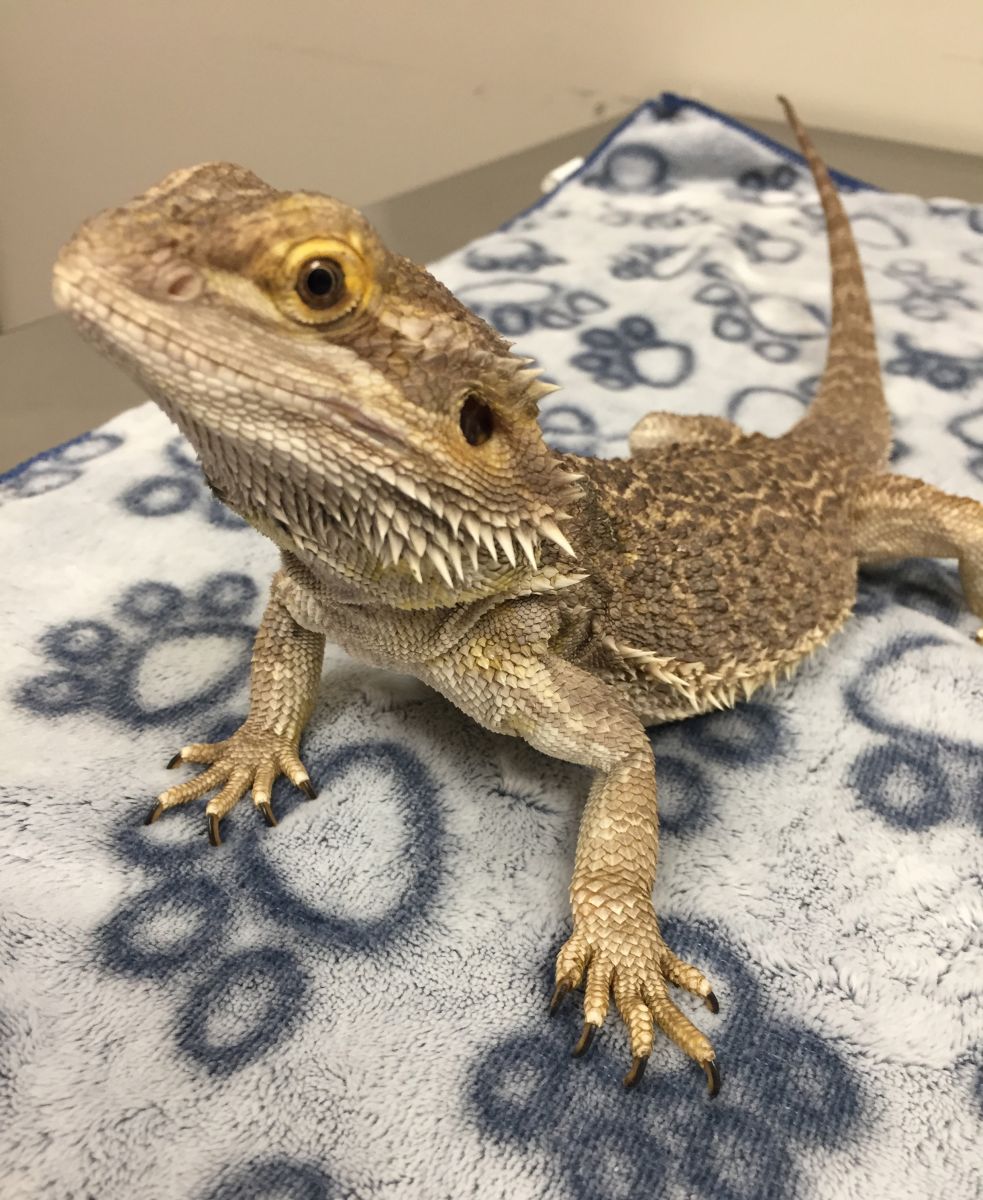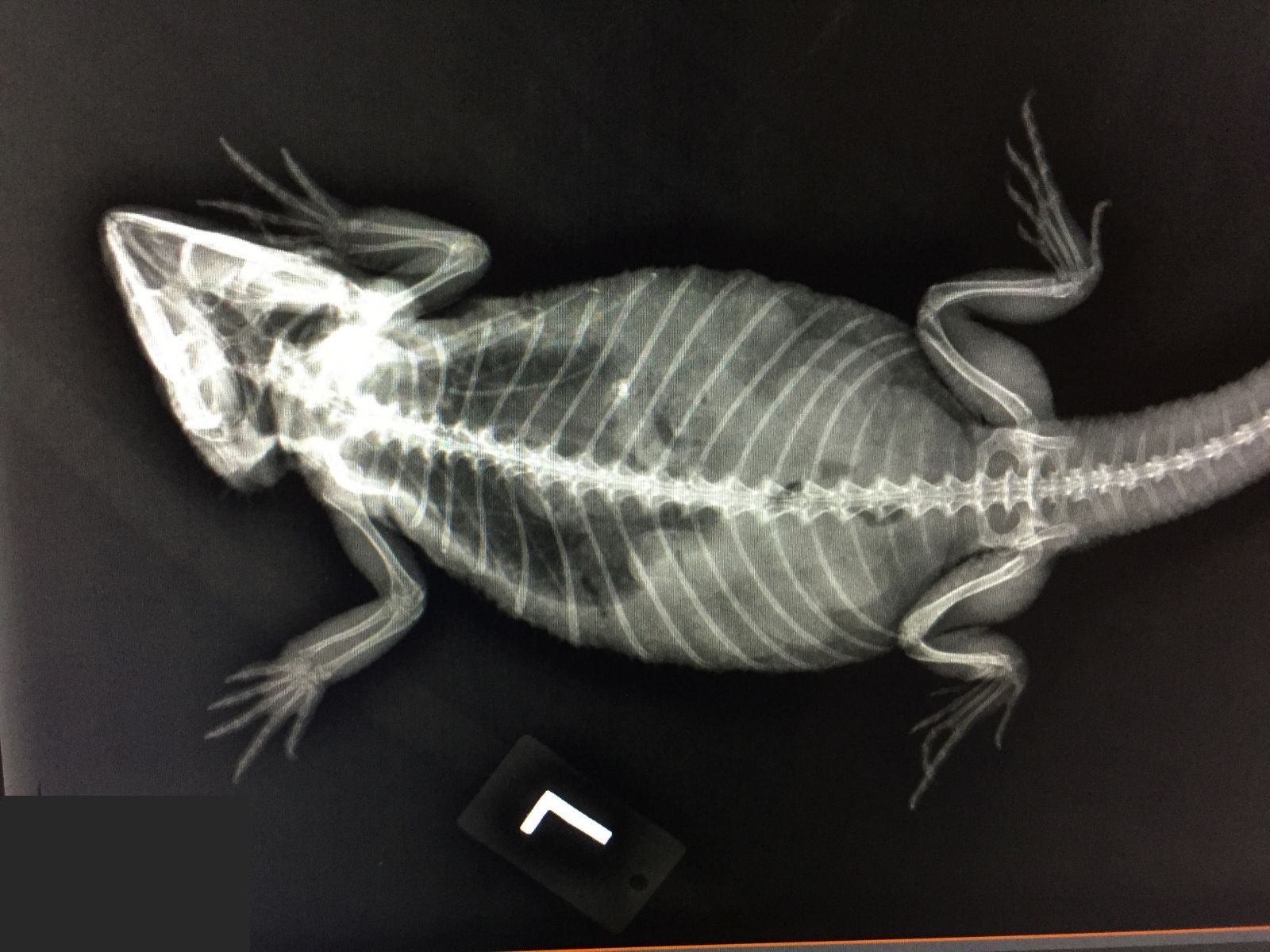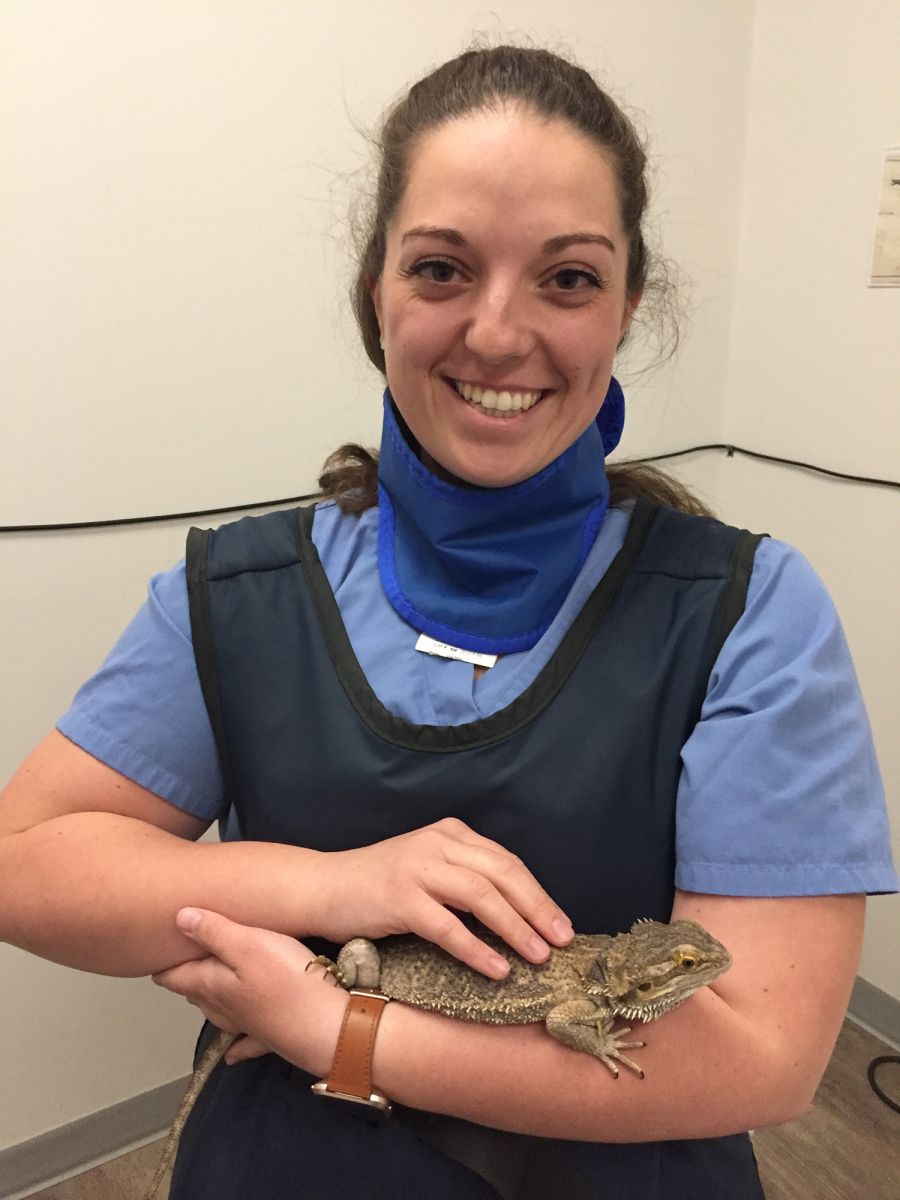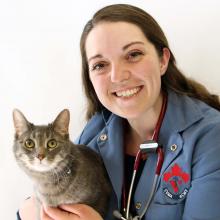When I saw an appointment for a rarer pet coming up on the schedule, I asked one of our veterinarians if I could join in on the case, as it’s not every day I could work with a bearded dragon. To my surprise, I was told that this was going to be my first solo case of the externship! In that moment, I realized that I couldn’t remember anything about reptile medicine and started to internally panic. Ivy the dragon was scheduled for later that afternoon with the complaint of walking with a limp and a swollen arm. It was time to do some serious reviewing!
After spending my lunch hour reading my school notes on reptile medicine, reaching out to classmates on their thoughts on the case (thanks Ange!), and scanning through resources like the Veterinary Information Network (VIN) and the Merck Manual I was as ready as I would ever be for my first case. I grabbed Trish, my 
Reptile (and other pocket/exotic pet) medicine is unique in that many of the diseases and health problems that occur are directly related to the housing and nutrition of these animals. Many of these pets may be in housing that does not match their natural habitat or may not be getting their specific nutritional needs met, and so the veterinarian needs to really do some digging into how these patients are normally housed at home. After asking about things like the temperature, humidity, UV light spectrum, as well as the diet, I wondered if Ivy might be getting enough calcium in her diet and if the light source was emitting the proper UV spectrum. Unfortunately, Ivy also sustained a short fall prior to the lameness, making me think that trauma might be a factor in the lameness. Next was the challenge of doing a physical exam on a reptile. One of the interesting things that I learned in my reptile-review power-hour is that you can’t listen to their heart using a stethoscope and instead you can take a heart rate using a doppler on their tail artery (check out the video, turn your volume up!).
After my initial assessment of the history and physical exam, I wondered if Ivy may have metabolic bone disease (MBD) secondary to nutritional hypocalcaemia. This is a very common diagnosis in pet reptiles as it can be difficult to meet their nutritional calcium needs and if the UV light spectrum of their terrarium lamp is not appropriate their guts can’t absorb calcium. 
After explaining the diagnosis to Ivy’s family, I asked them for more time so that I could come up with the treatment plan and luckily, they were very understanding and happy to give me a couple of hours to figure out what to do next. I went back to the textbooks and school notes, posted my case on VIN for advice, and even called a reptile veterinary specialist for advice. We came up with a plan to optimize Ivy’s habitat, and I was able to prescribe her an anti-inflammatory and a calcium treatment. For the broken arm, it’s actually advised not to cast/splint the limb as it can cause more fractures in a little arm. Interestingly, the uterus full of eggs was most concerning to the specialist. If a lizard retains eggs for a long time, the eggs will start to rot  within the lizard and cause something similar to a pyometra (check out Malika’s blog for more info on pyos!). So in order to entice Ivy to start laying these eggs, we had to create a nest box for her in the terrarium.
within the lizard and cause something similar to a pyometra (check out Malika’s blog for more info on pyos!). So in order to entice Ivy to start laying these eggs, we had to create a nest box for her in the terrarium.
This case pushed me to get over many fears (like holding a lizard!) and although I was internally panicking most of the time and didn’t know my reptile medicine 100 per cent, I’d still say it was a great experience and I learned many valuable lessons. Importantly, I realised that there will be times in practice where you won’t be perfect, and you won’t know all the answers or even what to do at the time. From this, you just have to acknowledge your limitations and flaws then work hard to overcome these and improve your abilities. You have to know where to look for credible information and integrate that with your current knowledge of basic medicine and abilities in practice. I am grateful to everyone who gave me advice, for the many resources available to veterinarians, and especially to Ivy’s family for their patience as I worked through the case. Hopefully, Ivy continues to heal and will live a long, happy, and calcium-rich life!
